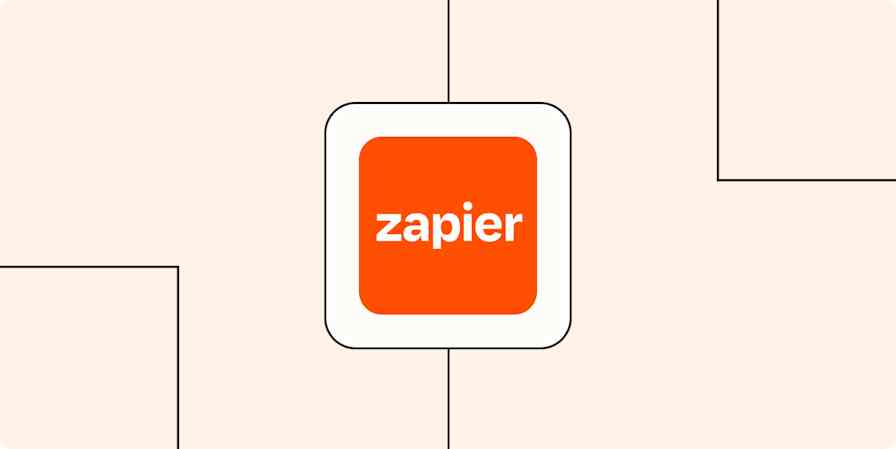A lot of companies talk about adopting AI. Few actually do it.
At Zapier, we've spent the last two years turning AI from a curiosity into something embedded across how we think, work, hire, and build. Today, 89% of our team actively uses AI in their day-to-day work. But that didn't happen overnight. It took urgency, infrastructure, trust, willingness to get a little messy, and a cultural shift that rewired how the whole company operates.
Here's how we did it and what we've learned so far.
Phase 1: Curiosity
Like most things at Zapier, it started with side projects and curiosity.
Before ChatGPT hit the mainstream, my co-founders Mike Knoop and Bryan Helmig were already messing around with LLMs. They built an SMS wrapper for GPT-3 just to poke at the edges of what was possible. We were each texting with it regularly about basic stuff. I would ask it for gift ideas for my wife or what that weird pain in my toe might be. The experience was pretty fun!
That made us pay attention. It felt like there were hidden capabilities waiting to be unlocked.
When ChatGPT launched publicly in November 2022, like many we were in awe. We suggested folks internally to check it out. There was no official program. Just word-of-mouth. A few months after our annual team summit in January 2023, Zapier customer Danny Richman gave an AI Q&A that lit a spark. You could feel it: gen AI was a paradigm shift.
But we were still experimenting. Not yet mobilizing.
Take action: Cultivate curiosity
Phase 2: 'Code Red'
That changed in March 2023, when GPT-4 dropped. Its capabilities were undeniable. It could write API docs, generate working code, summarize tickets, and do real knowledge work. The pace of improvement was a wake-up call.

We issued Zapier's first-ever "Code Red." Not because we had all the answers. But because we knew standing still was the only certain losing move. We didn't frame it as a polished rollout. We told the truth: AI was here, and it was going to change everything. That message wasn’t universally popular. But it was necessary to meet the moment—and we wanted everyone focused on that.
Take action: Create urgency
Phase 3: The foundations
Soon after Code Red we paused all work for a week and ran an AI Hackathon. Full-company participation. We wanted everyone in the company regardless of technical capability to get a tactile feel for what was changing. For engineering that might be building AI features. For non-technical teams that might mean adopting AI products in your day to day tasks. The message was "Everyone, let's get hands on keyboards. Build something real to develop a sense of what is possible with AI. Learn together."
The hackathon and our other activities promoting AI worked. Usage surged. But more importantly, the AI builder mentality stuck.
🔥 If you do only one thing, run regular hackathons: This is the single highest-leverage action you can take to build AI into your culture. Use the resources you'll find at the end of this section (or if you're a company with 500+ employees, hit us up). We've run these workshops with several customers, and we can help you execute your first one.

To pull off the hackathon and encourage regular AI use by everyone at Zapier, we needed to lay real groundwork:
Clear guardrails: Our General Counsel led the work to create detailed AI use guidelines. Legal and Security teams partnered to ensure folks knew exactly what tools they could use, how data privacy was handled (like our enterprise-grade OpenAI setup that opt-outs model training by default), and which types of data were off-limits.
Procurement: Our Lead PM took ownership of working with procurement, legal, engineering, and others to make sure we had an expedited process for getting tools in the hands of the team.
Enablement: We published a central AI Enablement knowledge hub so people knew how to get started. Bryan recorded developer-focused Looms. People could self-serve, but with structure.
Champions: Mike and Bryan were already deep in this space. Product manager Reid Robinson joined full-time to focus on AI, both to build and to help teammates learn how to build. We had internal momentum from people who cared and were surfacing early wins to help the rest of the org follow suit.
Structure: We didn't try to boil the ocean. We had a two-pronged approach: top-down and bottom-up. Top-down was narrow. We focused on a few places we felt were critical to update product capabilities with AI. Bottom-up, we encouraged small teams to move fast, iterate quickly, and share openly. We focused on real use cases that helped people in their daily work. Channels like #fun-ai became hubs of shared learning. We spun up AI working groups, ran live demos, and hosted internal Q&As.
Repetition > announcements: While Code Red was an effective catalyst, more work needed to be done. We had to come back to the message, over and over. In all-hands, hack weeks, demo sessions, and Slack threads we'd find places to encourage and reinforce why AI use was critical now.
Tolerance for duplication: We didn't try to clean everything up in real-time. Some AI experiments like our early OpenAI plugin and AI Actions didn't take off. But we let them run. That messiness, including the failed experiments, turned into new ideas for how to help our customers. When Model Context Protocol (MCP) gained steam in early 2025, we could move fast because we'd already laid some useful groundwork.
Overall, this approach helped folks move fast with confidence because we'd taken care of the compliance, safety, and structure behind the scenes. But this wasn't a simple, linear path. It was scrappy. It was inconsistent. It was a lot of "build it and see." But it got people building. And once that momentum started, it persisted.
Take action: Build foundations
Phase 4: From hackathons to habits
After that first AI hackathon in Spring 2023, AI steadily became part of how work got done.
We launched internal groups to share use cases, tips, and working examples. We enabled tools like Cursor to accelerate dev workflows. We held builder sessions at our team retreats. And we got serious about embedding AI into real workflows to automate internal business-critical work.
Our support team built Sidekick, a ticket summarizer that slashed average handle time—the time it takes to resolve a customer issue—in half.
The People team built tools for employee onboarding, feedback coaching, goal setting, and pulse survey analysis without writing a line of code.
We launched Zapier on Zapier, where teams use our own platform and AI tools to automate internal work like brief generators, PRD drafts, internal reporting, and more.
We also started tracking AI adoption. And what we saw was encouraging. In our engagement surveys:
65% of Zapiens said they used AI in daily work in late 2023—six months after our AI Code Red.
That climbed to 77% by the end of 2024.
As of spring 2025, it's hovering around 89%.
And here's the kicker: AI usage is distributed. This isn't a story of one team getting really good. It's a story of every team figuring it out. From support to comms, HR to engineering, small teams are building AI-powered workflows that actually ship.
Take action: Embed AI into everyday habits
Phase 5: Reinvention
Fast forward to where we are now. We've moved from tinkering → curiosity → capability → reinvention.
While the tendency is to think AI helps do the same work faster. And while that's part of it. The real unlock has been doing work that wasn't possible before. Tasks that were too time-consuming, too tedious, or too expensive to prioritize. AI is unlocking entirely new ways to serve our customers and get work done.
Some key changes we're seeing today:
Workflows reimagined: Teams are retrofitting and reimagining entire workflows with emergent AI capabilities.
Fewer hires, more output: We're not hiring as quickly because we're getting more leverage from the team we have. Teams are rethinking the way they work with AI at the heart. Stuff that used to fall through the cracks because it was too manual, too tedious, too expensive is now possible. The ROI here is real. Cultural shift: Zapier already had a culture of building with automation. One of our core values is "Build the Robot." That made the transition easier. But even still there's a nervousness around whether AI is coming for your job or not. Getting people's hands on the tools helped curb that fear. Folks get a tactile feel of what's possible and not. And folks quickly see knowing how to orchestrate AI is a critical skill advantage for their long term careers.
There's still work to do. Not everyone adopts at the same pace. We have early adopters, laggards, and everything in between. But the tipping point matters. Once you get enough momentum, the rest of the org follows.
Take action: Reinvention
What we'd tell others
We're now getting asked by other companies: How do we do what you did?
The opportunity cost of being at a company that's not helping you learn this stuff is high. But the flip side? It's a massive advantage for those who do.
Here's what's made a difference for us:
Don't wait for perfect clarity. You don't need a fully baked strategy to get started. You need a spark and space to explore.
Make it a company initiative. AI can't live in one team. If it's going to transform your org, it needs to be part of your operating system. Your best unlocks will often come from the edge, not top-down.
Invest in enablement. Build fast, share widely, and lower the barrier to start. People won't just figure it out. Give them tools, guidance, and clear guardrails.
Back it up. Company leaders need to be at those hackathons, building and sharing their work. Make someone accountable for AI adoption.
Be willing to disrupt yourself. Some workflows—and products—just won't make sense in an AI-first world. That's okay. Build new ones.
Keep it going. If hackathons happen every six months, you build the muscle. If it's one-and-done, folks fall back to the status quo.
Throughout this post we've shared the plans and assets we built. Hopefully those help you get moving. And if you're the CEO of a company with more than 500 employees, connect with me. We can talk about how to expand your org AI's usage, or even have our team run your first hackathon.
Because we're not done. We're still early. There are still hidden capabilities inside these models—little "chain of thought" nuggets waiting to be discovered.
But that's what makes this fun. The companies that win in this next wave won’t just ship features. They’ll rebuild their foundations—team by team, use case by use case, mess by mess.
We're still rebuilding. But we're doing it faster, better, and more creatively than we ever thought possible.







